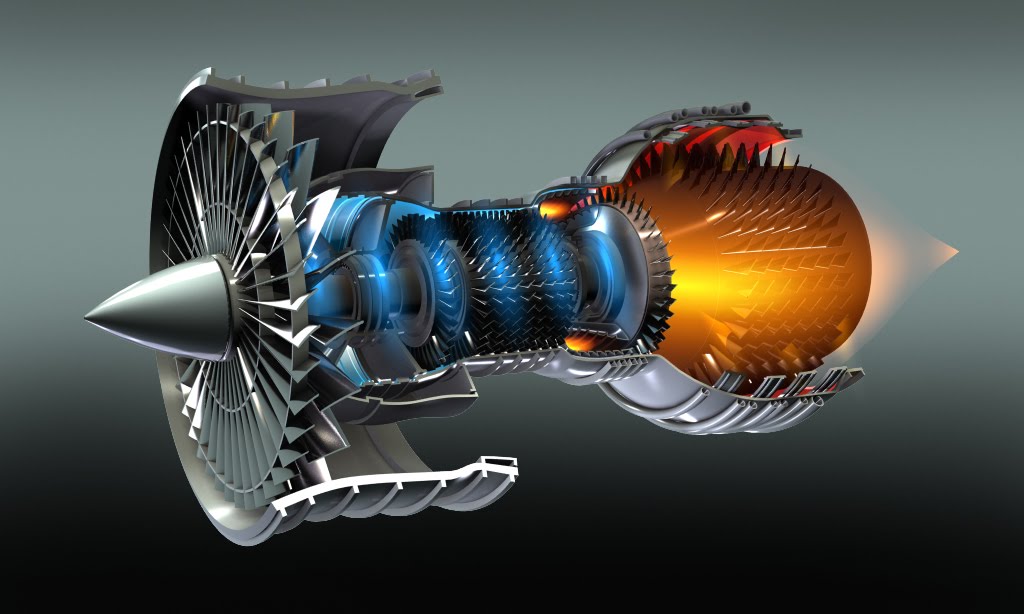Home Lift Drag Banking Engines Missiles Bibliography
Engines

http://ilmabad.com/how-does-a-jet-engine-work/#
Although propeller
engines have dominated the early 20th century, they have become
obsolete in both military and commercial aircraft. The
successor of the propeller engine is the jet engine. Jet
engines are more powerful and at high speeds they become more
efficient because of their aerodynamic form. Similar to
rocket engines, jet engines operate by thrusting air out of the
rear of the engine which propels the aircraft forward.
Newton's third law states that forces act in equal
action/reaction pairs, so the air that is pushed out of the rear
pushes the engine forward. The most commonly used engine
today is the turbofan engine. F-15 Eagles are one example
of a modern day fighter that utilizes the turbofan engine.
A turbofan engine operates
first by compressing the incoming air through a series of
compressor fans into the combustion chamber. Inside the
combustion chamber, the air is sprayed and mixed with
fuel. The mixture of gasses is then ignited and the
reaction of hot gasses is ejected out of the rear. Before
the gas reaches the nozzle, some of its kinetic energy is
directed towards turning a turbine which turns the compressor
fans, allowing fresh intake of air into the combustion
chamber. The turbine also turns the outer fan which not
only distributes air into the combustion chamber, but also
redirects air around it, generating extra thrust like a
propeller engine.
Most fighter jets also have afterburners next to the nozzle. The afterburner generates additional thrust by igniting additional fuel near the nozzle, allowing the jet to reach supersonic speeds.
Most fighter jets also have afterburners next to the nozzle. The afterburner generates additional thrust by igniting additional fuel near the nozzle, allowing the jet to reach supersonic speeds.
